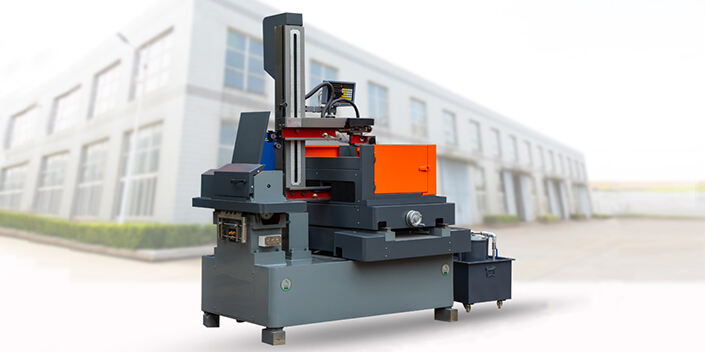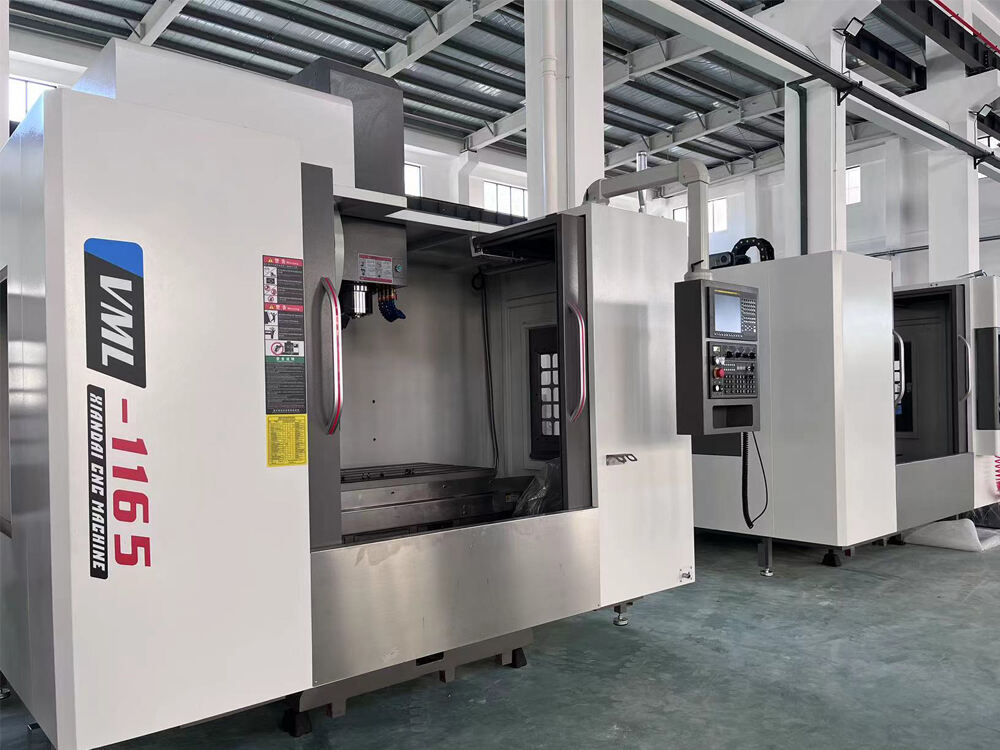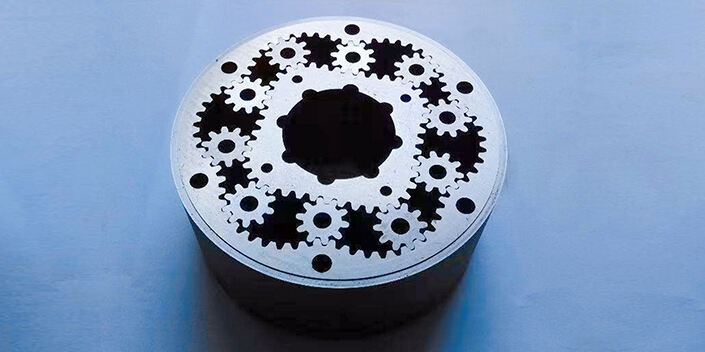Pangunahing Mga Komponente ng Mataas na Katitikan na Linya ng Pagputol
Mga Sistema ng Kalibrasyon para sa Paghanda ng Sheet
Ang mga solusyon sa presisong pag-uukit ay mahalaga para sa wastong pag-alin ng sheet, na kritikal upang panatilihing tama ang integridad ng pamamahayag. Inaasahan sa mga sistemang ito na bawasan ang mga kasalanan sa produksyon at siguraduhing bawat sheet ay tumutugma sa standard. Karaniwang ginagamit ang mga sistema ng laser at optical sensors sa pagkalibrar, na kilala dahil sa kanilang kakayahan na maabot ang mas presisyong mga sukatan. Halimbawa, pinapatak ng mga laser ang beak sa ibabaw ng anyo ng material para sa mabilis at wastong pag-alin, samantalang tinatahanan ng optiko ang mas maliliit na pagkakaiba. Nakikita sa data ng industriya na mas mataas ang rate ng defektibong sheets kaysa sa nakaayos na sheets, at kinakailangan ang mga presisyong sistema upang makamit ang pinakamataas na epekibilidad ng pamamahayag.
Advanced CNC Controls para sa Katumpakan ng Habà
Ang mga Sikat na Sistemang CNC (Computer Number Control) ay nagdedemograpya sa elemento ng katumpakan ng haba ng mga cut-line. Pinag-equipan ang mga sistemang ito ng closed-loop feedback na nagpapahintulot ng pagsisika ng real-time habang pinapanatili ang mataas na katumpakan sa produksyon. Ang tunay na haba ng mga setting ng cut ay kritikal din upang mabawasan ang dami ng basura na makakarating sa mas epektibong produksyon at pag-save ng pera. Maaaring magresulta ng malaking pag-unlad sa produktibidad ang paggamit ng mga sistemang CNC sa mga proseso ng paggawa tulad ng ipinakita sa ilang nareport na kaso. Halimbawa, ang mga kumpanyang gumagamit ng mas kumplikadong mga kontrol na CNC ay may napakataas na babang error margins na nagiging sanhi ng pinagaling na throughput at mas epektibong paggamit ng mga resources.
Integrasyon sa EDM Wire Cutting Technologies
Kapag sinasamahan ng teknolohiyang EDM (Electrical Discharge Machining) na pagsusukat ng drayd, masasaksihan ng mga sistema para sa pagkakamtan ng talakayang laki ang ekstraordinadong pagtaas sa presisyon. Ang pagsusukat gamit ang EDT ay mas epektibo kaysa sa tradisyonal na pamamaraan ng pagsusukat dahil maaari nito magbigay ng mas matapos at mas kumplikadong anyo na mahirap maabot gamit ang tradisyonal na paraan. Nakita ng mga industriya ng aerospesyal at paggawa ng medikal na aparato ang mga benepisyo sa gastos at imprastraktura kapag ginagamit ang wire EDM. Pati na rin, ang bagong teknolohiya ay hindi lamang nagpapabuti sa presisyon kundi pati na din nagpapataas sa fleksibilidad ng paggawa dahil maaaring sukatin ang higit na kumplikadong anyo upang maiwasan ang katulad na kasarian. Lalo na itong gamit ang pagsusukat ng kawing elektriko EDM ay espesyal na gamit para sa mga industriya na gustong magproseso ng mga trabaho na may mas mataas na kalidad at mas presisyon.
Pag-optimize ng Pagproseso ng Material Handling sa Sheet Metal Processing
Paggawing Bawas ng Deformasyon ng Material Sa Tamang Pagclamp
Sheet Metal Forming Kailangan ng tamang mga teknik sa pagclamp upang suportahan ang integridad ng sheet metal habang ang sheet ay sinusugpuan. Bilang ang sheet ay siguradong tinatagos sa tetimang posisyon, inalis nila ang dayundong galaw at pagkabulok ng material na maaaring bumaog sa kalidad ng tapos na produkto. Ibinuo na ang iba't ibang sistema ng pagclamp, na pinagandang para bumawas sa pagkabulok, kabilang dito ang pneumatic at hydraulic clamps. Kinakailangan ito upang malaba-ang ang mga defektong nangyayari sa proseso ng sheet metal. Ang mga pinakamainam na praktis para sa presyon ng clamp ay a) itakda ang presyon ng clamp batay sa kapaligiran ng material at yunit ng katigasan ng material at huwag masyado para hindi pumasok sa panganib na masira o masubok ang parte(s). Dahil ang mga proseso na ito ay nagpapahintulot na panatilihin ang mga huling produkto sa kanilang mga espesipikasyon, bilang resulta ay lalo pang mapapabuti ang kabuuang produktibidad ng produksyon at paggamit ng material.
Stratehiya na Pinapalakas ng LSI para sa Mga Anisotropic na Materyales
Ang paggamit ng LSI maaaring magsagawa ng rebolusyon sa mga estratehiya ng pagproseso ng mga anysotropikong material, tulad ng mga material na may iba't ibang mekanikal na katangian sa bawat direksyon. Sa pamamagitan ng LSI, maaaring ipakita ng mga kumpanya ang bagong, pribadong estratehiya upang mahalungkupin ang mga hamon na nauugnay sa mga ganitong material. Ang mga pamamaraan na ito ay nagbibigay-daan ng masusing kontrol dahil maaaring ayusin ang mga parameter ng pagproseso para sa bawat indibidwal na material upang tignan ang mga directional na katangian. Ayon sa mga pag-aaral tungkol sa LSI para sa pagproseso ng sheet metal, nakita na ang mga transportasyong sistema na may LSI ay may mas mataas na antas ng presisyon sa paghahandle at isang malaking pag-unlad sa kalidad ng produkto. Pribadong anyo ng mekanikal na katangian Sa pamamagitan ng ganitong isometric na benepisyo, pinapayagan ng paraan ng LSI na maabot ang tiyak na mekanikal na pagganap, mas epektibo kaysa sa mga tradisyonal na sistema - na ibig sabihin pangkalahatan ay mas kaunti ang basura at mas epektibong paggawa.
Mga Kapaligiran ng Pagproseso na Kinontrol ang Temperatura
Ang kontrol ng init ay isang mahalagang factor sa pormasyon ng sheet metal, na nakakaapekto sa mga propiedades ng anyo nito pati na rin sa mga resulta ng machining. Ang mabuting kontrol ng temperatura ay nagpapigil sa pagkakaroon ng warping at init na deformasyon, na maaaring mangyari kapag ang mga sheet ay nagiging sobrang mainit habang kinikita. Mga iba't ibang pamamaraan ng cooling, kabilang ang cooled air at refrigerant systems, ay naproba na makakamit ang wastong temperatura. Pagpapalakas ng relasyon: Ang impluwensya ng temperatura sa kalidad ng produkto: Nakita sa mga pag-aaral na may malakas na ugnayan ang temperatura kontrol at ang produktibo ng proseso, o kalidad ng produkto, na may mas uniform na kapaligiran ng temperatura na nagreresulta sa mas kaunti pang mga defekt at mas magandang surface finishes. Mahalaga ang pagbabawas ng pagproseso ng anyo at panatilihin ang integridad ng sheet metals sa pamamagitan ng paggawa sa kontroladong kapaligiran. Ang ganitong pinabuti na kontrol ay higit na benepisyoso para sa tightness at epektibidad ng mga manufacturing lines.
Mga Unang Teknolohiya para sa Pagpapabuti ng Presisyon
Mga Sistemang Pagsisiyasat ng Katanyagan sa Real-time
Ang sistema ng pag-monitor sa kanyang-kanayunan sa real-time ay may mahalagang kahulugan upang siguruhin ang katumpakan ng mga produkto sa sheet metal. Gumagamit ang mga sistemang ito ng mga makabagong sistema ng pag-monitor, kabilang ang mga paraan ng pag-uukur na batay sa ultrasonic at laser, upang patuloy na maitataya ang kapal ng anyo ng materyales habang nagproseso. Sila ay tumutulong sa pagbabawas ng basura at scraps sa pamamagitan ng pagbibigay ng agad na feedback. Ang datos mula sa industriya ay nangangakala na ang pag-monitor sa real-time ay nagpapabuti sa produktibidad ng produksyon, dahil nakakakita at nag-aadjust agad ang mga manunuo para sa mga pagkakaiba. Ang tampok na ito ay hindi lamang tumutulak sa kalidad ng mga produkto, kundi ginagawa din ang agad na epekto sa pinagmulan na may pinakamaliit na pagkakahapon ng materyales sa punto ng paggawa ng produkto.
Mga Protokolo ng Quality Control Na Nakikilala sa EDM
Ang mga prosedura ng QC (Quality control) na ginagamit sa mga operasyon ng EDM ay maaaring makatulong upang angkat ang mga pamantayan ng produksyon ng sheet metal. Ang mga ito ay mga inspeksyon na prosedura na batay sa mga paraan ng pagsasanay sa estadistika para sa maagang deteksyon ng defektibo at pagsira ng mga defektong gamit ang isang pangkalahatang antas ng inspeksyon. Ang paggamit ng mga estratehiyang ito ay natagpuan na alisin ang mga `ruido at fuzzy effects' sa paggawa sa pamamagitan ng pagfacilitate ng mga koreksyon at pag-adjust online. Halimbawa, sa mga kumpanya na nagpasok ng mga suportang kontrol sa kalidad na inspirado sa EDM, mayroong malaking benepisyo sa mga resulta ng produksyon. Ang paggawa ng mga uri ng mga estatistikal na inspeksyon ay tumutulak sa pagpapanatili ng mataas na pamantayan ng kalidad sa pamamagitan ng detalye.
Predictive Maintenance Gamit ang Vibration Analysis
ANG PREDICTIVE MAINTENANCE ay ang pinakamahusay na pamamaraan para maantala ang mga pagdama ng kagamitan at nasa puso ng ganitong uri ng posisyon ang analisis ng pag-uugoy. Nakakakilala kung ano ang sinasabi ng patern ng pag-uugoy tungkol sa pagganap ng iyong makina at kagamitan, maaaring mag-identifica ang mga koponan ng maintenance ng isang isyu bago ito maging isang problema. Inilathala ng IDA ang mga estadistika na kinuha mula sa ilang mga kaso ng maintenance na nagpapakita ng malaking baba sa bilang ng mga pagdama ng kagamitan dahil sa maagang deteksyon gamit ang analisis ng pag-uugoy. Ang predictive maintenance ay kaya nang mapataas ang buhay ng makina at panatilihin ang walang katigilan na produksyon. Marami pang makukuha para sa mga tagapagtayo sa pagsusuri ng kultura ng proaktibong, higit sa reaktibong maintenance.
Pagpapatotoo ng Kalidad sa mga Operasyon ng Cut-to-Length
Mga kinakailangang surface finish para sa iba't ibang aplikasyon
Ang surface finish ay isang malaking factor sa kontrol ng kalidad ng huling produkto at maaaring makuha ang mga siginifikanteng pagkakaiba-iba sa mga aplikasyon. Ang bahagi ng transmisyong sasakyan, eroplano, selula, bawat isa nito kailangan ay kontrolin ang kanilang sariling presisyon ng trimming at surface roughness upang maabot ang katatagan ayon sa larangan. Sa industriya ng aerospace, ang kalmaduhan ng surface finish ay kritikal para sa pagbabawas ng drag at fuel efficiency. Ang mga parameter tulad ng Ra (Roughness Average) at Rz (ang promedio ng pinakamataas na peak hanggang valley height) sukatan ang mga tekstura ng ibabaw upang sila'y sumunod sa mga makikitid na pangangailangan ng iba't ibang larangan. Isang mas mababang Ra (at kaya'y isang 'mas maliwanag' na finish) maaaring maitala para sa mga float sa mataas na estres na kapaligiran habang isang mas mataas na rating ng Ra maaaring maitala para sa mga hindi kritikal na komponente.
Integrasyon ng post-processing kasama ang deep hole machining
Ang mga sistema ng pamamaraan pagkatapos ng pagbubuhos ng malalim na butas ay kailangan upang optimisahin ang kalidad. Nagdadala ng espesyal na problema ang pagbubuhos ng malalim na butas tulad ng pagkakalengke ng tool at pagsisimula ng init na maaaring magresulta sa hindi tikgang bore. Ang mga problema na ito ay maaaring maiayos sa pamamagitan ng detalyadong pamamaraan pagkatapos, tulad ng finishing o reaming, kung saan maaaring mapabuti ang surface finish, dimensional accuracy, at mga error ng bore. Talakayin ng mga tunay na tagumpay mula sa larangan na ang ganitong integrasyon ay hindi lamang nag-aangkin ng kalidad, pero pati na din nagpapabuti sa produktibidad ng produksyon. Halimbawa, isang gumaganap na tagagawa ng makinarya, ay nakita ang drastikong pag-unlad sa presisyon ng mga parte at 20% na baba sa antas ng pagtutol pagkatapos ng integrasyon ng solusyon sa pamamaraan pagkatapos. Nagiging sigurado ang proseso ng synergism na ang mga parte ay ayon sa pinakamahirap na mga spesipikasyon para sa kabuuang relihiyosidad ng produkto.
Pagpapatupad ng Statistical Process Control
Kailangan na kontrolin ng statistical process control (SPC) ang kalidad ng mga operasyong cut-to-length. Gumagamit ang SPC ng malawak na karamihan ng mga tool tulad ng control charts at process capability analysis upang kontrolin ang mga proseso ng paggawa. Ang mga control chart tulad ng p-chart, np-chart, c-chart, u-chart ay nakikita kung may anomang sitwasyon na out of control o anomang pagbabago na nangyayari sa loob ng kinontrol na rehiyon o simpleng kung sila ay nasa ilalim ng kontrol o hindi, samantalang ang process capability ay nagbibigay ng pahayag kung ang proseso ay makapagproduce ng mga produkto o hindi. Halimbawa, isang control chart na nagalerta kapag isang proseso ay umuubos papunta sa isang hindi makatotohan na estado maaaring tumulong sa pagbawas ng mga defektibo. Ang paggamit ng SPC ay nagiging isang best practice sa industriya, tulad ng electronics manufacturing kung saan ang SPC ay ginagamit upang siguruhin ang patuloy na kalidad ng produkto at dumagdag sa kabuuang epekibilidad ng produksyon. Kaya, maliban sa pagtukoy ng mga pamantayan ng kalidad, suporta ang SPC sa proseso ng patuloy na pag-unlad at kaya'y pinakamumuhunan ang gamit ng mga yaman habang pinipigil ang basura.





